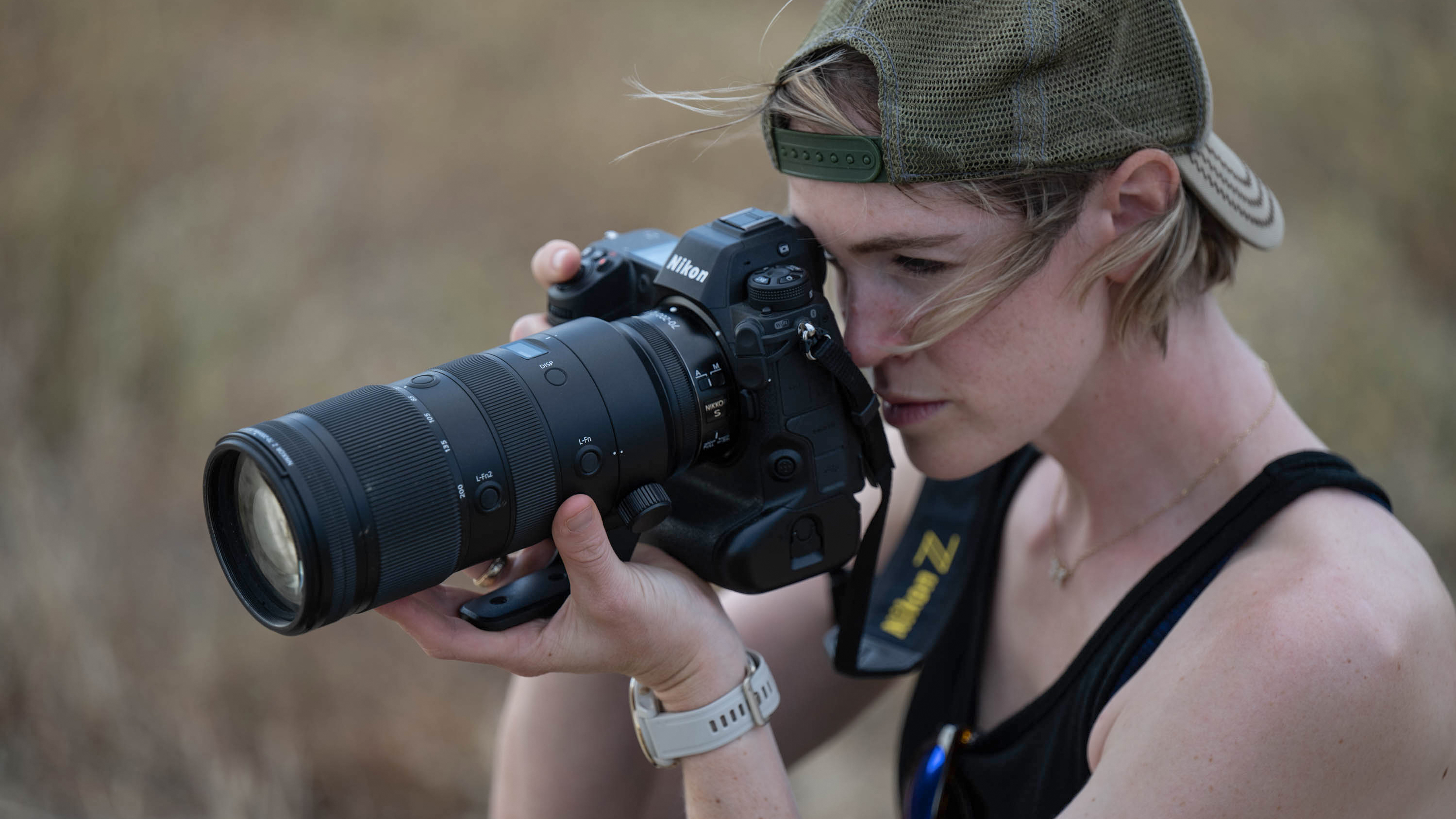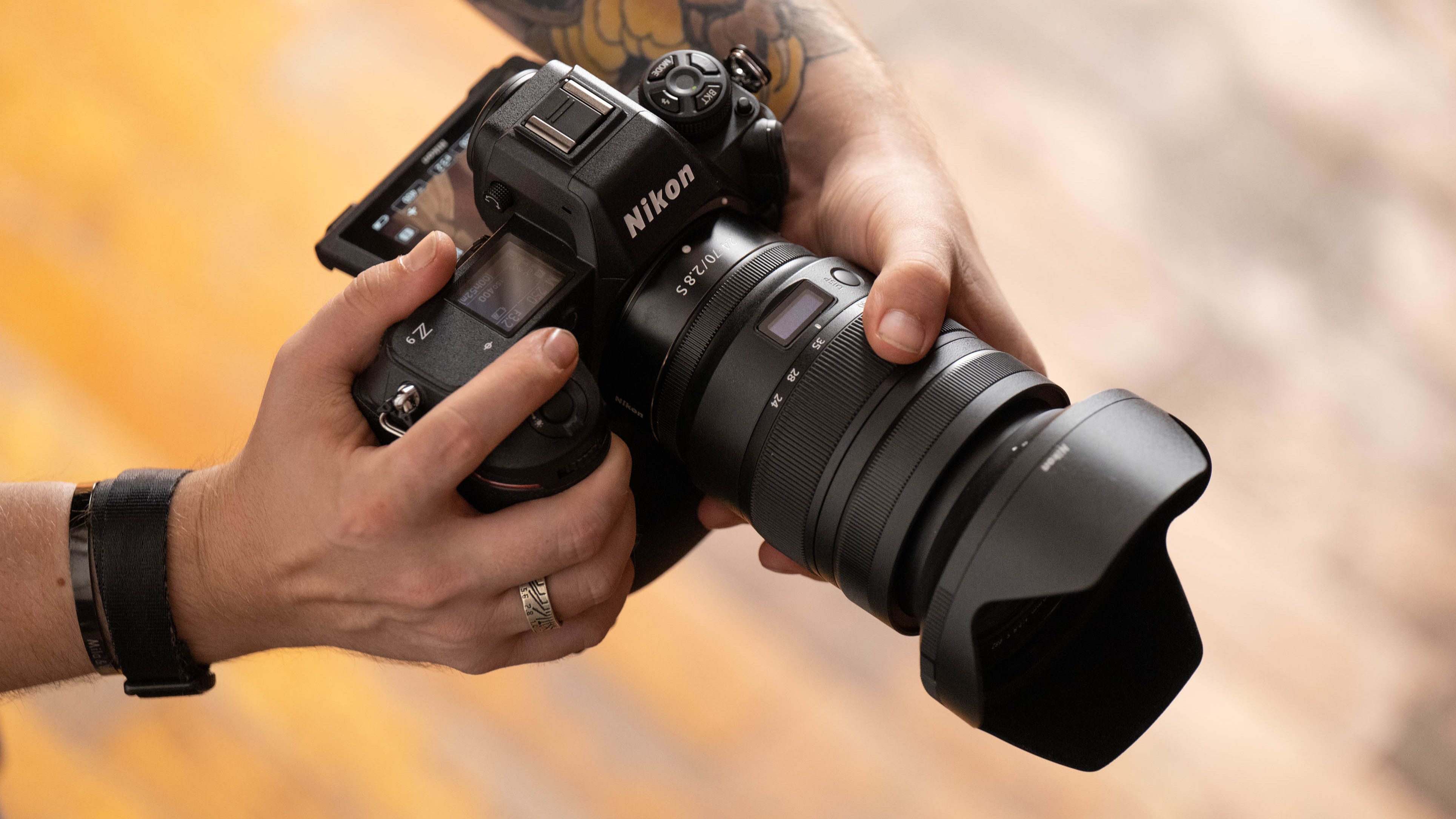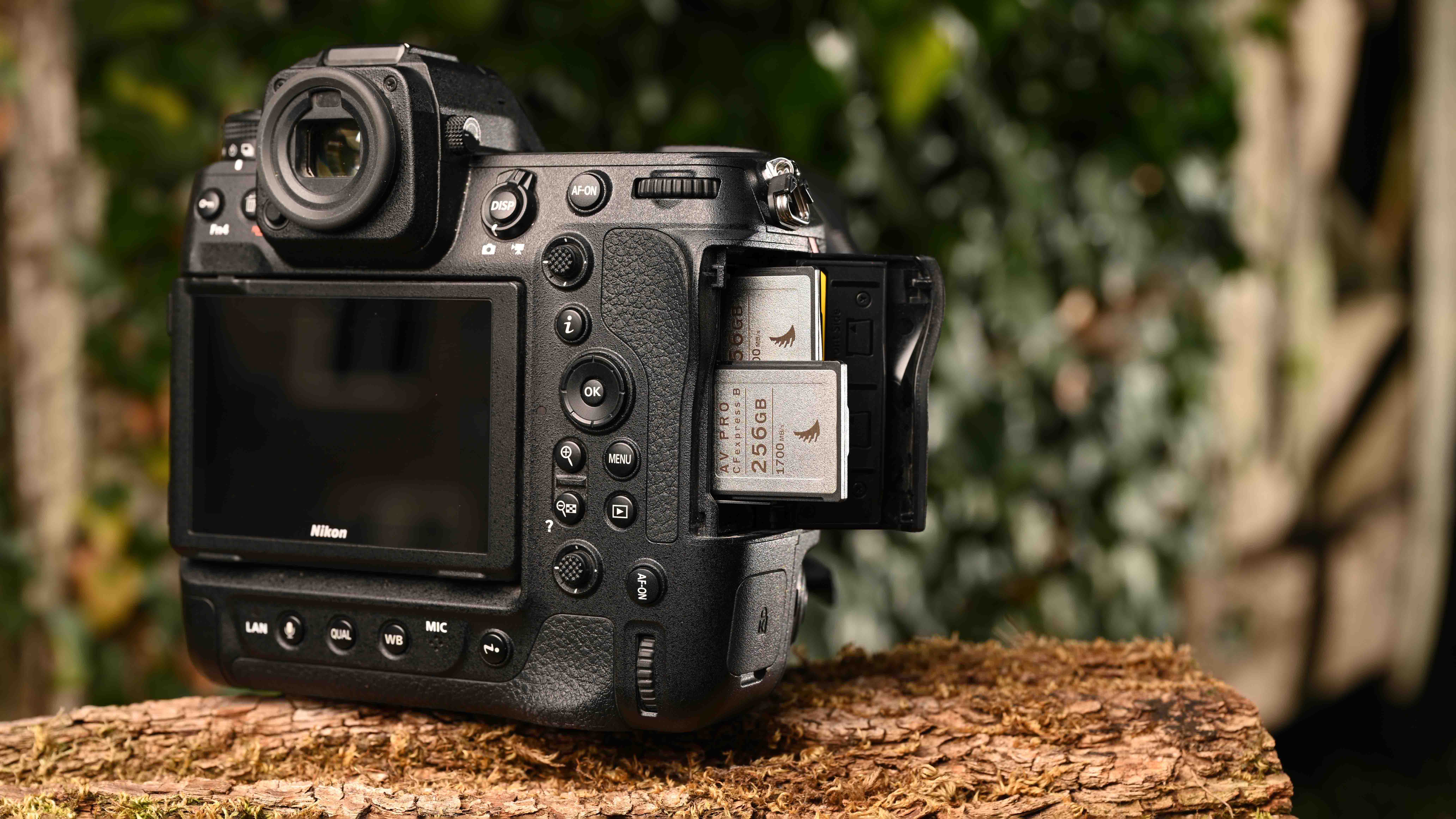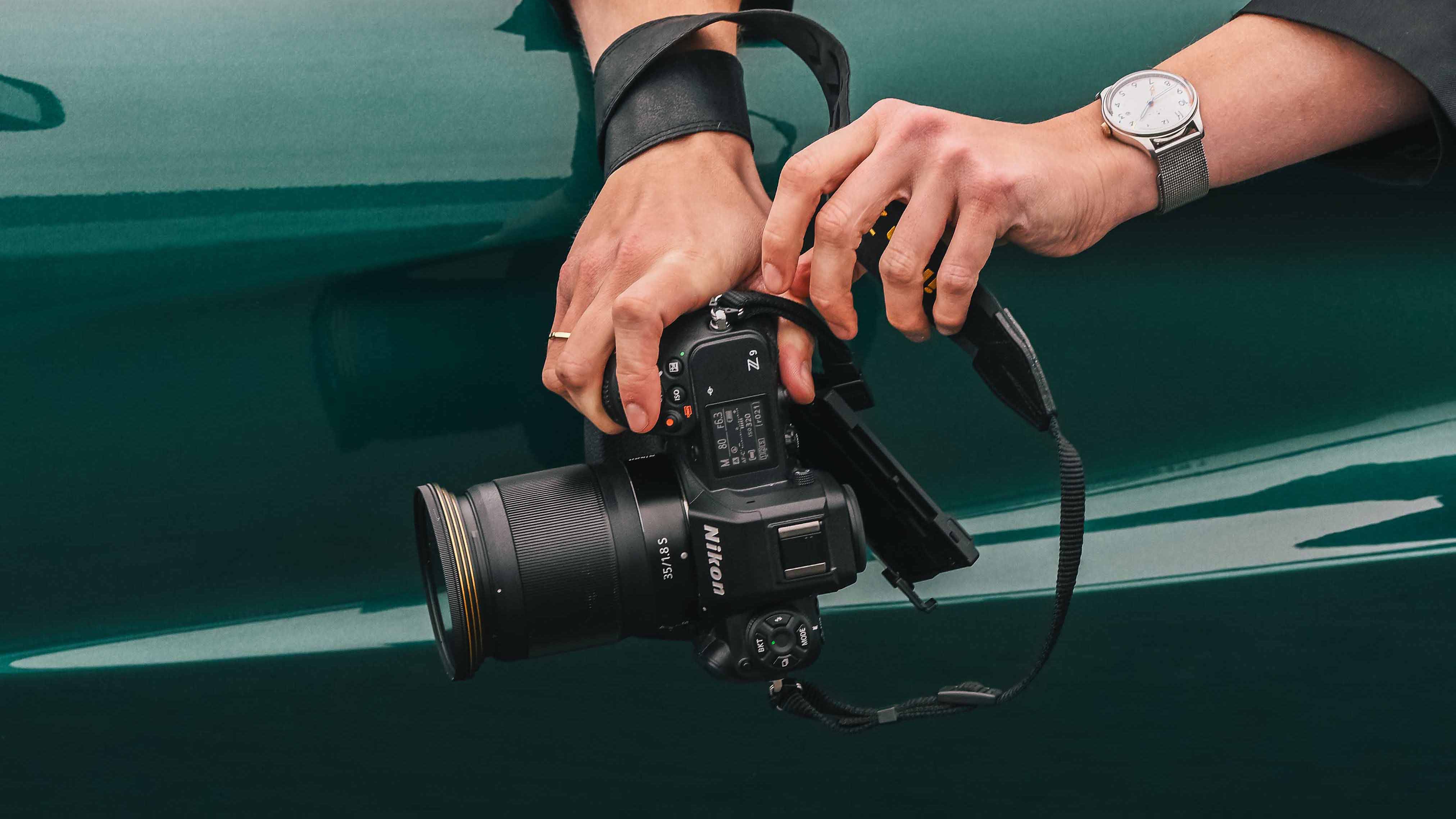Nikon Z9 blitzes the Canon R3 and Sony A1 with 120fps bursts – and it’s just $5,496
The Nikon Z9 destroys the Sony A1 and Canon R3 with 45.7MP, 8K 60p, 16-bit RAW, 120fps burst shooting and a $5,496 RRP

At long last, the Nikon Z9 has been fully revealed by Nikon – and it packs unrivaled firepower, including an astonishing 120fps continuous shooting speed, 8K video at up to 60p, and 16-bit RAW imaging from its 45.7MP stacked image sensor. Not only that, it boasts a price tag of just $5,496 / £5,299 / AU$8,999.95, making it the most advanced and affordable pro camera on the market.
This means that the Nikon Z9 eclipses its key rivals in the speed and video stakes, since the Sony A1 and Canon EOS R3 both max out at 30fps continuous shooting, while the A1 and Canon EOS R5 each top out at 8K 30p video – and unlike its competitors, the Z9 can sustain 8K 30p recording for over two hours before overheating.
There are, however, a couple of caveats to the Z9’s unheard of speed. When shooting at 120fps, the camera only captures cropped images at 11MP. And while it can match the A1 and R3’s top speed of 30fps (uncropped), it can only record RAW files at a maximum rate of 20fps – though it does so with no blackout, thanks to a dedicated feed to the electronic viewfinder providing a continuous real-time view to the world’s brightest (3000-nit) EVF.
Still, those different shooting speeds offer unrivaled flexibility – and even at 120fps the camera retains full AF/AE performance, which is supported by over 100 fast Nikon lenses. And 20fps enables you to capture bursts of over 1,000 images, with Nikon telling us that internal tests had resulted in bursts of 5,000 images!

So long, mechanical shutter!
The new stacked sensor isn’t just good for burst modes, of course. Despite completely eschewing a mechanical shutter, the electronic shutter on the Nikon Z9 allegedly makes rolling shutter a virtual non-issue – thanks to what Nikon says are the “world’s fastest sensor scan rates”. The sensor is protected by a new sensor shield, too (similar to that seen on the Canon EOS R system), to prevent dust and damage when changing lenses.
It isn't just a sprinter, though; when it comes to 8K, the Nikon Z9 is a marathon runner, with the manufacturer claiming that it can record 8K 30p for up to 125 minutes without overheating or shutting down. It will be very interesting to find out how long it can sustain 8K 60p capture…
Get the Digital Camera World Newsletter
The best camera deals, reviews, product advice, and unmissable photography news, direct to your inbox!
The Nikon Z9’s other specs are equally enticing. It now boasts Deep Learning AF for intelligent autofocus algorithms, and nine types of simultaneous subject detection: eye, face, head and upper-body detection on humans; eye, head and body detection on animals; and recognition of cars, planes, trains and motorbikes.
Not only is subject tracking superior to that of the mighty Nikon D6, the autofocus system boasts 493 AF points, 405 auto-area AF points (five times more than the Nikon Z7 II) and 10 different AF area modes.
In terms of low light performance, the Z9 has a native ISO range of 64-25,600 expandable to 32-102,400. Nikon also boasts about its advanced noise-reduction algorithms to improve shooting in challenging conditions.

A body for everybody
Speaking of low light, 11 key buttons on the camera can be illuminated with a flick of the power switch, enabling you to easily make adjustments in the dark.
The body is, as you would expect, fully weather sealed and operational down to 14°F / -10°C, made of magnesium alloy for rugged performance and optimum heat dispersal – which is key for keeping the 8K video going without overheating.
It features a pro DSLR-style body with integrated vertical grip, and is about 20% smaller and 10% lighter than the Nikon D6. The button placement has been improved, with a notable return of the AF Mode button – something that will warm the hearts of Nikon DSLR users.
One of the Z9’s biggest party tricks is its four-axis tilting monitor, which while not fully articulated is nonetheless ingeniously designed – enabling the screen to tilt 90° horizontally or vertically. The info display also rotates when you spin the camera into portrait orientation, to prevent you having to read all your settings sideways.
Unlike the Canon EOS R3, the Nikon Z9 smartly opts for dual CFexpress Type B card slots, which Nikon claims deliver the “fastest transfer speeds in the field” – though it notes that peak performance is specifically achieved the Delkin Devices CFexpress Type B cards, which it has found to deliver optimum speeds.
This 1700Mbps format means that the blazing 120fps bursts and 8K 60p video can rattle through without an issue, but the Z9 also features a new high-efficiency N-RAW format that replace the previous Small and Medium RAW options. A standard RAW image is about 50MP, but a high-efficiency RAW is between 10-15Mb without sacrificing any quality.
The camera also boasts built-in Wi-Fi and ethernet, along with USB-C connectivity to 5G smartphones – all of which can be controlled from a single menu tab.

Availability
The Nikon Z9 goes on sale in November for just $5,496 / £5,299 / AU$8,999.95 – significantly cheaper than the Sony A1 and Canon EOS R3 – with shipping expected to begin in December.
It should be noted that a number of features – including the headline 8K 60p recording, 16-bit RAW capture and Apple ProRes support – will not be available until the launch of a firmware update sometime in 2022.
Pre-order the Nikon Z9 from Adorama (US)
Pre-order the Nikon Z9 from B&H (US)
Pre-order the Nikon Z9 from Park Cameras (UK)
Pre-order the Nikon Z9 from Ted's Cameras (AU)
Read more:
Best professional cameras
Best Nikon cameras
Best Nikon Z lenses
Best Nikon Black Friday deals
Best Black Friday camera deals
Best Cyber Monday camera deals

James has 22 years experience as a journalist, serving as editor of Digital Camera World for 6 of them. He started working in the photography industry in 2014, product testing and shooting ad campaigns for Olympus, as well as clients like Aston Martin Racing, Elinchrom and L'Oréal. An Olympus / OM System, Canon and Hasselblad shooter, he has a wealth of knowledge on cameras of all makes – and he loves instant cameras, too.
